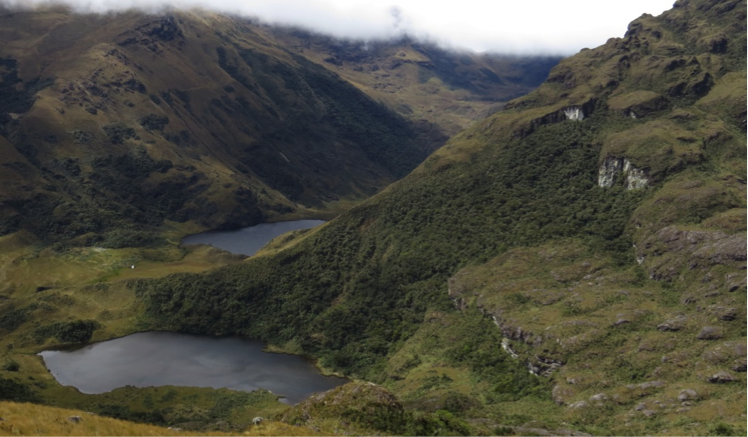New Protected Area Declared to Conserve Key Ecosystems in Piura, Peru
04/14/2015
 The Piura region of Peru now boasts two new protected areas created through a collaboration between NCI, the regional government of Piura, and local communities. On March 31st, Peru’s Ministry of Environment declared the San José de Tapal private community reserve, protecting 2,270 acres of high priority ecosystems in the Andes Mountains. This new protected area will help establish habitat connectivity alongside the 400 mile Andean corridor, protecting endangered species such as the woolly monkey and spectacled bear.
The Piura region of Peru now boasts two new protected areas created through a collaboration between NCI, the regional government of Piura, and local communities. On March 31st, Peru’s Ministry of Environment declared the San José de Tapal private community reserve, protecting 2,270 acres of high priority ecosystems in the Andes Mountains. This new protected area will help establish habitat connectivity alongside the 400 mile Andean corridor, protecting endangered species such as the woolly monkey and spectacled bear.
These high-altitude páramos and cloud forests are among the planet’s most biodiverse ecosystems, and play a vital role in maintaining both the quality and quantity of the region’s water supply. This protected area is located at the headwaters of the Quiroz River, which irrigates 100,000 acres of agricultural land downstream.
 Despite the important services they provide, just 2% of páramo ecosystems are represented in Peru’s National System of Protected Areas, making this declaration even more significant. The community of San José de Tapal is committed to conservation, and is monitoring the reserve for any illegal activity, particularly involving the reserve’s precious wildlife. They have received the support of surrounding communities, who in 2013 celebrated the declaration of the Samanga private community reserve with the help of NCI. Now, other communities are looking to San José de Tapal and Samanga for guidance in creating additional protected areas.
Despite the important services they provide, just 2% of páramo ecosystems are represented in Peru’s National System of Protected Areas, making this declaration even more significant. The community of San José de Tapal is committed to conservation, and is monitoring the reserve for any illegal activity, particularly involving the reserve’s precious wildlife. They have received the support of surrounding communities, who in 2013 celebrated the declaration of the Samanga private community reserve with the help of NCI. Now, other communities are looking to San José de Tapal and Samanga for guidance in creating additional protected areas.
As part of NCI’s overarching vision to protect these key ecosystems, NCI’s office in Piura is also promoting an innovative mechanism to fund conservation in the region. The Quiroz Water Fund collects water use fees from downstream water users, which fund conservation initiatives in the upstream ecosystems supplying the water. For instance, the Fund has begun implementing a project to improve the agricultural practices of upstream farming communities. The creation of new protected areas and the integration of innovative strategies such as the Quiroz Water Fund are both hopeful steps toward safeguarding the region’s natural resources.


